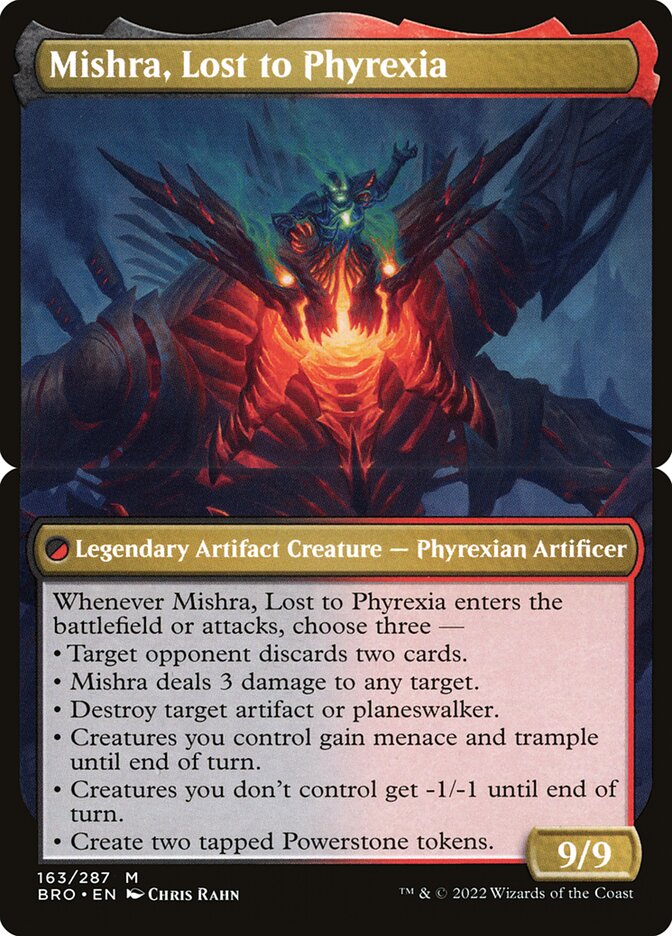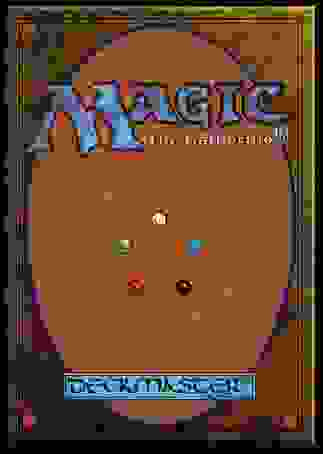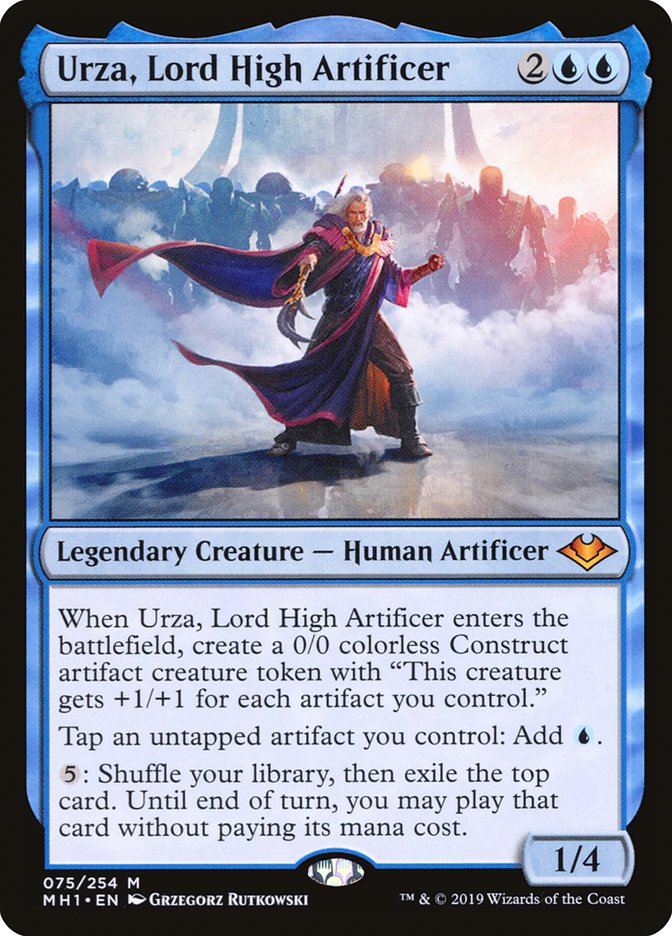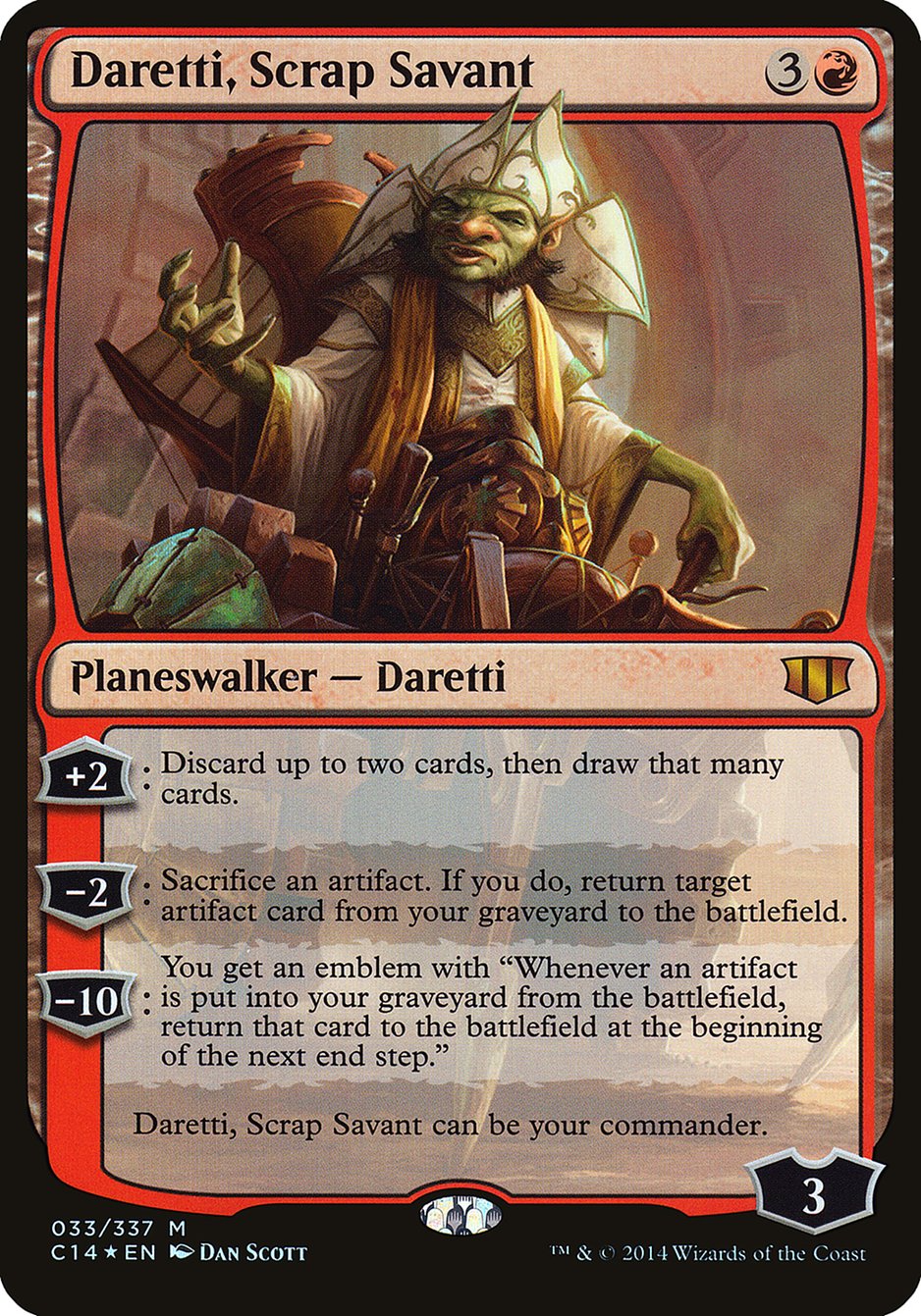Mishra, Lost to Phyrexia Carta MTG
| Expansões | Lançada em 2 expansõesVer todas |
| Custo convertido de mana | 7 |
| Raridade | Mítica |
| Tipo | Legendary Artifact Creature — Phyrexian Artificer |
| Ataque | 9 |
| Defesa | 9 |
Texto da carta
Whenever Mishra, Lost to Phyrexia enters the battlefield or attacks, choose three — • Target opponent discards two cards. • Mishra deals 3 damage to any target. • Destroy target artifact or planeswalker. • Creatures you control gain menace and trample until end of turn. • Creatures you don't control get -1/-1 until end of turn. • Create two tapped Powerstone tokens.
Cartas similares a Mishra, Lost to Phyrexia
Mishra, Lost to Phyrexia marks its territory in the world of artifact-centric legends. It stands shoulder to shoulder with renowned commanders like Urza, Lord High Artificer, known for its ability to tap an untapped artifact you control to add blue mana. While Mishra doesn’t directly ramp your mana, it disrupts the field by turning your artifacts into unrelenting threats. Unlike Urza’s consistent mana gain, Mishra offers the potential for substantial board impact each turn.
Considering Daretti, Scrap Savant, another comparable card, Daretti’s focus is on recycling artifacts from the graveyard to the battlefield or your hand—something Mishra doesn’t facilitate. However, what Mishra lacks in recursion, it compensates with its ability to forge new artifact creatures each turn. The difference lies in Daretti’s immediate value in recursion versus Mishra’s repetitive creature creation introducing long-term advantage.
The synergy between artifacts and their commanders is essential, and while each legendary creature offers a unique approach, Mishra, Lost to Phyrexia brings a fresh dynamic. It amasses an army while potentially transforming non-threatening artifacts into formidable creatures, thereby altering the course of the game with each artifact played.
Cartas semelhantes a Mishra, Lost to Phyrexia por cor, tipo e custo de mana
Card Pros
Card Advantage: Mishra, Lost to Phyrexia ensures you remain ahead by potentially granting multiple draws or plays from both your hand and graveyard, which strengthens your position as the game progresses.
Resource Acceleration: This card acts as an engine for powering up your gameplay by allowing you to cheat mana costs, effectively accelerating your resource pool and enabling larger plays sooner than usual.
Instant Speed: With the versatility of an instant speed ability, this card affords you the flexibility to respond to threats or optimize your strategy at a moment’s notice, keeping opponents on their toes.
Card Cons
Discard Requirement: Mishra, Lost to Phyrexia comes with a need to discard a card, a potential setback for players when hand size is critical. Managing your resources is key, and being forced to give up potentially useful cards can put you at a disadvantage, especially in tight game situations where each card in hand could turn the tide of battle.
Specific Mana Cost: This card demands a precise combination of mana to be played, including both Phyrexian and colorless mana. This specialized mana requirement might restrict deck-building options and decrease the versatility of the card, as it naturally fits into a narrower range of decks compared to those with more generic mana costs.
Comparatively High Mana Cost: Another concern is the card’s mana cost, which is on the higher end for what it delivers. In the rapidly evolving battlefield of an MTG game, committing four mana to a single spell must yield significant impact, and there may be other cards available at the four mana slot that provide more immediate or potent effects.
Reasons to Include in Your Collection
Versatility: Mishra, Lost to Phyrexia adds a dynamic layer to gameplay, seamlessly integrating into multiple deck archetypes. Its ability to manipulate both artifacts and creatures offers unique strategic options across various formats.
Combo Potential: This card serves as a critical piece in combos, particularly in artifact-centric decks. Its second ability to create token copies can exponentially increase the threat level on the board, especially when synergized with abilities that trigger upon artifacts entering the battlefield.
Meta-Relevance: As the meta shifts towards decks that exploit synergies with artifacts, Mishra, Lost to Phyrexia becomes an increasingly critical card. Its potential to disrupt opponent’s strategies while advancing your own board state makes it a wise choice for competitive play.
How to beat
Mishra, Lost to Phyrexia represents a potent force on the battlefield in Magic: The Gathering. Its ability to manipulate artifact spells and create token copies is a substantial advantage in any artifact-centric deck. Overcoming Mishra requires a strategic approach that includes countermeasures that eschew reliance on targeted removal, which its ability can often circumvent.
One effective strategy is leveraging graveyard hate cards. As Mishra relies heavily on graveyard synergies, cards like Relic of Progenitus or Leyline of the Void can inhibit those interactions. Another method is to control the stack; countering key spells with counters such as Negate or Dovin’s Veto can prevent Mishra from getting the upper hand with their token-copying ability. Additionally, utilizing board wipes like Wrath of God or Damnation can reset the board, effectively removing Mishra and its tokens in one sweep. Lastly, keeping pressure with aggressive creature strategies can overwhelm a Mishra player before they establish a fortified position.
In essence, successfully navigating against Mishra, Lost to Phyrexia involves a diverse approach that limits graveyard access, disrupts artifact synergies, and maintains board presence to ensure control over the game’s direction.
Onde comprar
Se você deseja comprar um cartão Mishra, Lost to Phyrexia // Mishra, Lost to Phyrexia MTG de um conjunto específico como The Brothers' War Art Series and The Brothers' War, há diversas opções confiáveis a serem consideradas. Uma das principais fontes é a loja de jogos local, onde muitas vezes você pode encontrar boosters, cartas individuais e decks pré-construídos de conjuntos atuais e de alguns conjuntos anteriores. Eles geralmente oferecem o benefício adicional de uma comunidade onde você pode negociar com outros jogadores.
Para um inventário mais amplo, especialmente de conjuntos mais antigos, mercados on-line como TCGPlayer, Card Kingdom e Card Market oferecem seleções extensas e permitem que você pesquise cartas de conjuntos específicos. Grandes plataformas de comércio eletrônico, como eBay e Amazon, também têm listagens de vários vendedores, o que pode ser um bom lugar para procurar produtos lacrados e achados raros.
Além disso, o site oficial do Magic geralmente tem um localizador de lojas e listas de varejistas para encontrar a Wizards of the Produtos licenciados pela Costa. Lembre-se de verificar a autenticidade e a condição dos cartões ao comprar, especialmente de vendedores individuais em mercados maiores.
Abaixo está uma lista de alguns sites de lojas onde você pode comprar os Mishra, Lost to Phyrexia // Mishra, Lost to Phyrexia e outras cartas MTG:
 COMPRAR
COMPRAR BurnMana é parceiro oficial da TCGPlayer
- eBay
- Card Kingdom
- Card Market
- Star City Games
- CoolStuffInc
- MTG Mint Card
- Hareruya
- Troll and Toad
- ABU Games
- Card Hoarder Magic Online
- MTGO Traders Magic Online
Veja produtos de MTG
Expansões
A carta Mishra, Lost to Phyrexia // Mishra, Lost to Phyrexia Magic the Gathering foi lançada em 2 expansões diferentes entre 2022-11-18 e 2022-11-18. Ilustrado por Chris Rahn.
| # | Lançamento | Nome | Código | Símbolo | Número | Moldura | Layout | Borda | Artista |
|---|---|---|---|---|---|---|---|---|---|
| 1 | The Brothers' War Art Series | ABRO | 38 | 2015 | Série de arte | Sem borda | Chris Rahn | ||
| 2 | 2022-11-18 | The Brothers' War | BRO | 163b | 2015 | Combinar | Preta | Chris Rahn |
Legalidades
Magic the Gathering formats where Mishra, Lost to Phyrexia has restrictions
| Formato | Legalidade |
|---|---|
| Standard | Válida |
| Historicbrawl | Válida |
| Historic | Válida |
| Legacy | Válida |
| Oathbreaker | Válida |
| Gladiator | Válida |
| Alchemy | Válida |
| Pioneer | Válida |
| Commander | Válida |
| Modern | Válida |
| Future | Válida |
| Vintage | Válida |
| Duel | Válida |
| Explorer | Válida |
| Brawl | Válida |
| Timeless | Válida |
Regras e informações
O guia de referência para regras de cartas de Magic: The Gathering Mishra, Lost to Phyrexia fornece decisões oficiais, quaisquer erratas emitidas, bem como um registro de todas as modificações funcionais que ocorreram.
| Data | Texto |
|---|---|
| 2022-10-14 | A player prompted to name a card may name the combined back face, and each player has the right to know that combined back face's characteristics at all times. |
| 2022-10-14 | Activating a card's unearth ability isn't the same as casting that card. The unearth ability is put on the stack, but the card is not. Spells and abilities that interact with activated abilities (such as Defabricate's second mode) will interact with unearth, but spells and abilities that interact with spells (such as Scatter Ray) will not. |
| 2022-10-14 | Although all the cards in The Brothers' War that create Powerstone tokens create a tapped Powerstone token, entering the battlefield tapped isn't part of the token's definition. Notably, if you create a token that is a copy of a Powerstone token, the token copy won't enter the battlefield tapped. |
| 2022-10-14 | At the beginning of the next end step, a permanent returned to the battlefield with unearth is exiled. This is a delayed triggered ability, and it can be countered by effects such as Defabricate that counter triggered abilities. If the ability is countered, the permanent will stay on the battlefield and the delayed triggered ability won't trigger again. However, the replacement effect will still exile the permanent if it eventually leaves the battlefield. |
| 2022-10-14 | If a permanent returned to the battlefield with unearth would leave the battlefield for any reason, it's exiled instead—unless the spell or ability that's causing the permanent to leave the battlefield is actually trying to exile it! In that case, it succeeds at exiling it. If that spell or ability later returns the card to the battlefield (as Static Net might, for example), the permanent card will return to the battlefield as a new object with no relation to its previous existence. The unearth effects will no longer apply to it. |
| 2022-10-14 | If an effect moves a melded permanent to a new zone and then affects "that card," it affects both cards. |
| 2022-10-14 | If you activate a card's unearth ability but that card is removed from your graveyard before the ability resolves, that unearth ability will do nothing as it resolves. |
| 2022-10-14 | In the Commander variant, a meld card's color identity is determined only by the mana costs and mana symbols in the rules text of its front face. No symbols or rules text of the permanent it melds into are considered. |
| 2022-10-14 | Note that the permanent represented by the combined back faces has a color indicator. |
| 2022-10-14 | One card in each pair of meld cards has an ability that instructs you to exile the two cards and meld them. If you control more than one object with one of those names, you select one object with that name to exile. |
| 2022-10-14 | Only two cards belonging to the same meld pair can be melded. Tokens, cards that aren't meld cards, or meld cards that don't form a meld pair can't be melded. If an effect instructs a player to meld cards that can't be melded, those cards remain in exile. |
| 2022-10-14 | Powerstone tokens are a kind of predefined token. Each one has the artifact subtype "Powerstone" and the ability ": Add . This mana can't be spent to cast a nonartifact spell." |
| 2022-10-14 | The mana value of a melded permanent is the sum of the mana values of its front faces. A creature that becomes a copy of a melded permanent has only the characteristics of that combined back face, and its mana value is 0. |
| 2022-10-14 | Unearth grants haste to the permanent that's returned to the battlefield (even if it's not a creature card). However, neither of the "exile" abilities is granted to that permanent. If that permanent loses all its abilities, it will still be exiled at the beginning of the next end step, and if it would leave the battlefield, it is still exiled instead. |
| 2022-10-14 | When a pair of cards are melded, the result is a single creature that's represented by two cards. If the melded creature dies, both cards are put into your graveyard. As it leaves the battlefield, both of those cards are turned face up again. If the cards are put on the top or bottom of your library, you choose their relative order. |
| 2022-10-14 | When two cards are exiled and melded, they each leave the battlefield, then return together as one new object with no relation to either of the objects that left the battlefield. Counters, Auras, Equipment, and other effects that affected those two cards don't affect the melded permanent. |
| 2022-10-14 | While a meld card is in any zone other than the battlefield, it has only the characteristics of its front face. The same is true while it's on the battlefield with its front face up. |
| 2022-10-14 | While a melded permanent is on the battlefield, it has only the characteristics of its combined back face. Any effects that modify how the new object enters the battlefield will consider only the combined back face. |
| 2022-10-14 | You can use the added by a Powerstone token on anything that isn't a nonartifact spell. This includes paying costs to activate abilities of both artifact and nonartifact permanents, paying ward costs, and so on. |




